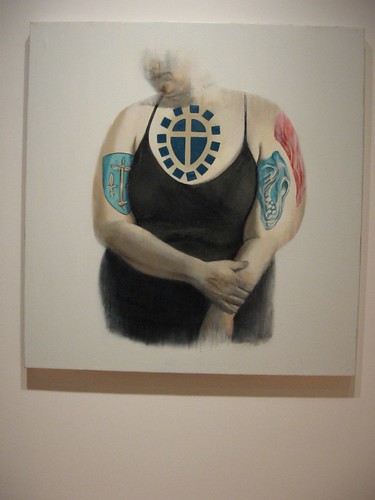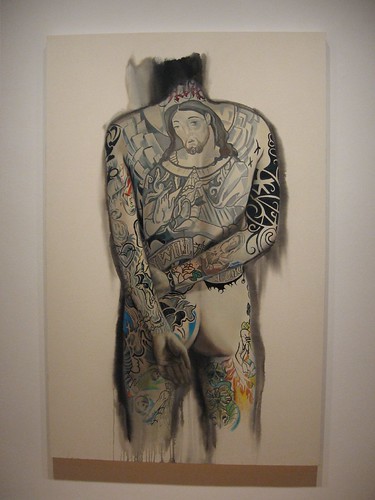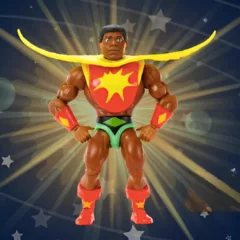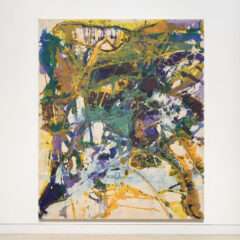Don’t judge Susan Moore’s work in her exhibit Second Skin at Locks Gallery by a digital image. The scale is confrontational–as large as or larger than life (many of the pieces are about 80 inches tall), and although the nudes are traditionally executed, the confrontation is not so much about the nudity, but rather about the stereotypes we have about people’s identities and their relationship to their bodies–and to the implications of the tattoo imagery they sport.
The tattoos that Moore draws atop the bodies do belong to the people in each drawing. But in most there’s a flatness, that detaches the tattoos from the skin and serves as a reminder that tats are not us and we are not them. In these works, identities shift between the tattoos and the bodies. A soft, middle-aged woman with a proper hairdo and fleshy rolls around her middle wears a brilliant red dragon–sexy and bold–on her lower back. A somewhat stooped guy in black slacks sports a classic Samurai image that covers his entire back. A corpulent women in a camisole sports a logo-like cross, covering her chest.
Some of the images are taboo in the context of tattoos and their placement on the body. Certainly an elaborate Christ icon on the sexy naked guy brings into question what the body means and what the image means. And June Cleaver sporting a sexy beast that’s been punctured into her flesh make us wonder what’s going on here.
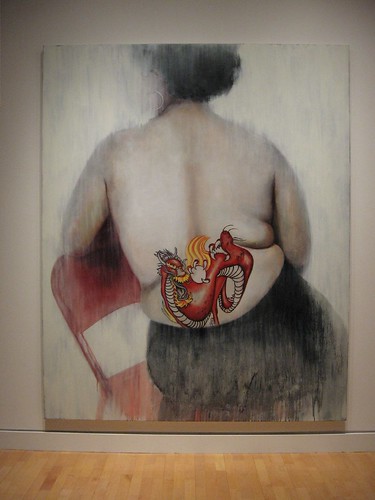
The dichotomy between people’s fantasies of who they really are, and the reality of their bodies, also turns into a confrontation between art historical culture and popular culture, with manga and other comic influences and iconographic symbols in tattoos taking the role of the make-believe, while art history–expressed in traditional figure studies–takes the role of the factuality of a human body. The fluidity of the figure drawings unfortunately undermines the factuality, but it does raise the contrast between academic realism and the brute treatment of the human body in the popular culture.

Susan Moore, litho crayon/flashe on mylar, 84 inches x 48″ each
The works are mostly oil on canvas, and not so much painted as drawn. A couple are litho crayon on mylar, which has a skin-like translucency. The materials and their relation to skin become relevant enough in these works to become part of the conversation–one of the reasons why digital images don’t do the pieces justice. The mylar pieces were particularly lovely and coherent, their message sent in subtle ways like the tattoo showing through a dress, but they lacked the confrontational zing of the others.

One of Peter Campus’ recent videos, taken on the North Shore of Long Island, where he now lives after leaving New York. This one is alignment of the spheres.
Upstairs at Locks, the lights are dim and the movement is slllllooooowwwww. Not much happens in Peter Campus’ exhibit “the earth is nowhere,” which includes six recent videos of landscapes. A bird flies across the sky; a boat sails in the distance behind a telephone pole that bisects the screen kind of like Eileen Neff’s tree–without the weirdness. The subject is our small place in the mighty universe, a love of nature, plus a sense of human intrusion on nature, and time slowed down. In terms of content, I’d say this is pretty conventional landscape painting, except it’s on video.
You can get a sense of this work by clicking on one of the short video clips Locks Gallery obligingly put on their website. Love that.
Mostly what I thought about was how this is video that could fit in a home or on an office wall (hear that, lawyers?). It’s not so noisy or busy that it jumps off the wall to interrupt the party or the dinner conversation.
And, with the hard drives supplying the image rather than a DVD, it feels different from throwing lots of money at a little piece of super-reproducible plastic. While it’s not revolutionary, this seems like a way that video people can actually make some money.
Also included in the exhibit are two older videos by Campus of faces, projected on the gallery wall, the sort of work for which he is best known. These are also slow, but a bit more unsettling.


